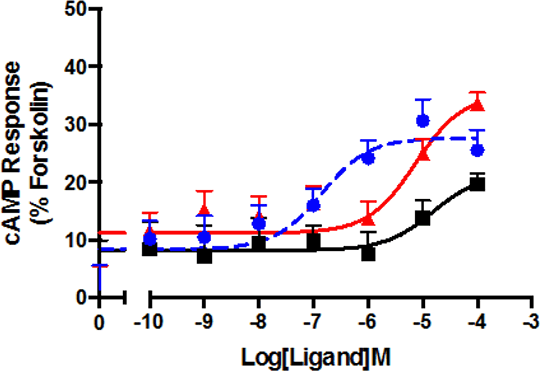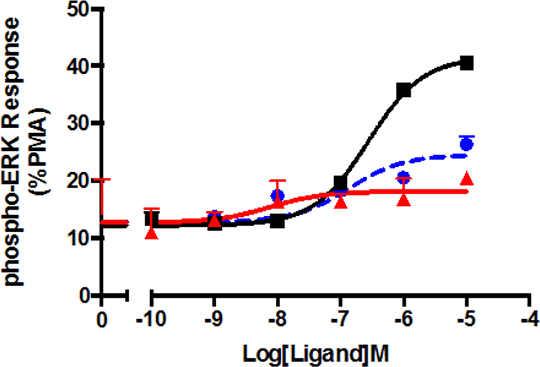Pharmacological characterization of novel glucagon-like peptide-1 receptor agonists The glucagon-like peptide 1 receptor (GLP-1R), a family B G protein-coupled receptor (GPCR), is an important regulator of blood glucose levels via the binding of the incretin peptide GLP-1(7-36)amide. Consequently, GLP-1R is an important drug target for the treatment of type II diabetes with a number of peptide-based GLP-1R agonists clinically available. In addition to the identification of improved GLP-1R peptide agonists, there is growing interest in the development of small molecule drugs and allosteric modulators, i.e. ligands that bind to sites topographically distinct from the endogenous agonists orthosteric binding site. The pyrimidine BETP ((4-(3-benzyloxyphenyl)-2-ethylsulfinyl-6-(trifluoromethyl)pyrimidine) is one such small molecule reported to have weak partial agonism at the GLP-1R [1]. Through virtual screening of libraries of purchasable compounds, we have identified 33 novel compounds against the GLP-1R with distinct chemical scaffolds. Here we present evidence of signaling bias at the GLP-1R for two of these compounds, namely RL-11 and RL-54. Using both a phospho-Extracellular signal-regulated kinase 1 and 2 (ERK1/2) assay and cAMP accumulation assay, we tested the activity of these compounds at the GLP-1R. RL-11 and RL-54 were shown to have agonistic activity in terms of an elicited cAMP response at the GLP-1R (pEC50 of 5.13±0.39 and 4.82±0.69, respectively) without modulating the activity of the low-affinity GLP-1R agonist, oxyntomodulin. RL-11 and RL-54 also elicited a phosphor-ERK1/2 response (pEC50 of 5.75±0.73 and 6.8±0.32) with a maximum level detected for RL-54 (Emax= 35.80±2.03) when compared to both RL-11 and BETP (Emax of 22.21±2.58 and 23.68±1.25, respectively). These data suggest that our new compounds could represent ideal scaffolds to develop new more efficacious bias ligands at the GLP-1R.
Figure 1: cAMP assay of GLP-1R targeted compounds. cAMP accumulation was detected after GLP-1R transfected HEK 293T cells were exposure to ligands for 30 min. Responses were normalized to the forskolin response. All values are mean ± SEM were n ≥ 5 independent experimental repeats.
Figure 2: Phospho-ERK assay of GLP-1R targeted compounds. Phospho-ERK (Thr202/Tyr204) was measured in GLP-1R transfected HEK 293T cells after exposure to ligands for 10 min. Responses were normalized to the PMA. All values are mean ± SEM were n ≥ 5 independent experimental repeats. [1] Wootten et al., (2013). Mol Pharmacol 83:822–34.
|



